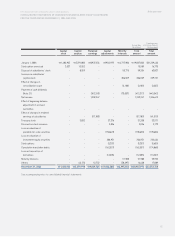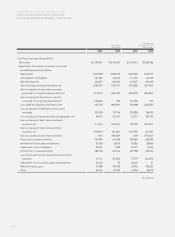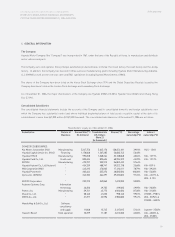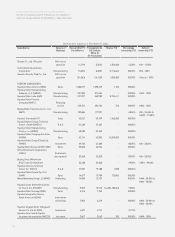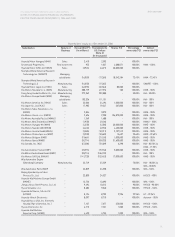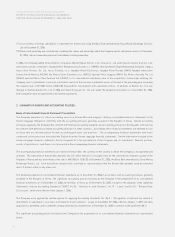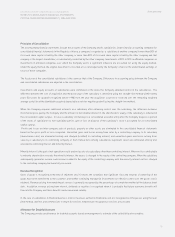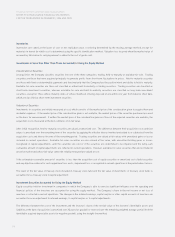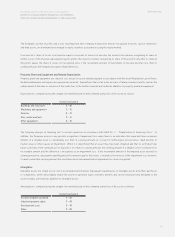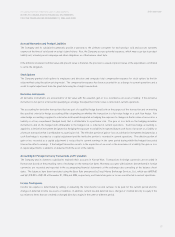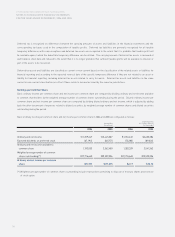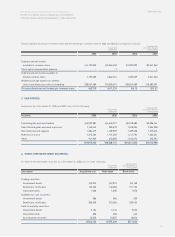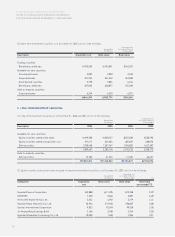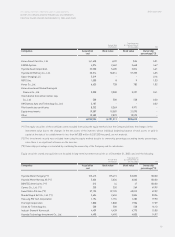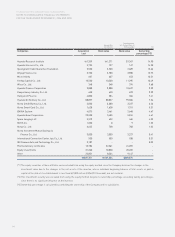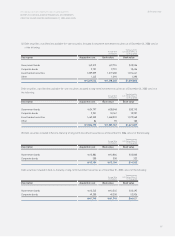Hyundai 2006 Annual Report Download - page 79
Download and view the complete annual report
Please find page 79 of the 2006 Hyundai annual report below. You can navigate through the pages in the report by either clicking on the pages listed below, or by using the keyword search tool below to find specific information within the annual report.
75
HYUNDAI MOTOR COMPANY AND SUBSIDIARIES
NOTES TO CONSOLIDATED FINANCIAL STATEMENTS
FOR THE YEARS ENDED DECEMBER 31, 2006 AND 2005
The Company’s portion of profits and losses resulting from inter-company transactions that are recognized in assets, such as inventories
and fixed assets, are eliminated and charged to equity securities accounted for using the equity method.
If an investor’s share of losses of an investee equals or exceeds its interest in investee, the investor discontinues recognizing its share of
further losses. If the investee subsequently reports profits, the investor resumes recognizing its share of those profits only after its share of
the profits equals the share of losses not recognized. Also, if the recoverable amount of investments in investee becomes less than its
carrying amount, the Company recognizes impairment loss.
Property, Plant and Equipment and Related Depreciation
Property, plant and equipment are stated at cost, except for assets revalued upward in accordance with the Asset Revaluation Law of Korea.
Routine maintenance and repairs are expensed as incurred. Expenditures that result in the increase of future economic benefits such as the
enhancement of the value or extension of the useful lives of the facilities involved are treated as additions to property, plant and equipment.
Depreciation is computed using the straight-line method based on the estimated useful lives of the assets as follows:
The Company charges all financing cost to current operations in accordance with SKAS No. 7 – “Capitalization of Financing Costs”. In
addition, the Company assesses any possible recognition of impairment loss when there is an indication that expected future economic
benefits of a tangible asset is considerably less than its carrying amount, as a result of technological obsolescence, rapid declines in
market value or other causes of impairment. When it is determined that an asset may have been impaired and that its estimated total
future cash flows from continued use or disposal is less than its carrying amount, the carrying amount of a tangible asset is reduced to its
recoverable amount and the difference is recognized as an impairment loss. If the recoverable amount of the impaired asset exceeds its
carrying amount in subsequent reporting period, the amount equal to the excess is treated as the reversal of the impairment loss; however,
it cannot exceed the carrying amount that would have been determined had no impairment loss been recognized.
Intangibles
Intangible assets are stated at cost, net of accumulated amortization. Subsequent expenditures on intangible assets after their purchases
or completions, which will probably enable the assets to generate future economic benefits and can be measured and attributed to the
assets reliably, are treated as additions to intangible assets.
Amortization is computed using the straight-line method based on the estimated useful lives of the assets as follows:
Useful lives (years)
Buildings and structures 2 – 60
Machinery and equipment 2 – 15
Vehicles 3 – 15
Dies, molds and tools 2 – 14
Other equipment 3 – 15
Useful lives (years)
Goodwill (negative goodwill) 5 – 20
Industrial property rights 2 – 40
Development costs 3 – 10
Other 2 – 50


